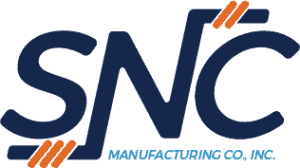
How to help solve two critical problems in manufacturing
Mitigating issues with the labor gap and supply chain
Manufacturing companies are facing unprecedented times. With difficulties to attract and retain great candidates, along with supply chain disruptions, companies are struggling to solve their problems in manufacturing and keep up with customer demands.
On the Manufacturers’ Network Podcast, Rick Winter, SNC Manufacturing’s VP of Sales and Marketing, discusses its employee culture and maintaining strong customer relationships. That podcast, along with the following tips, may provide some insight in mitigating the two key issues facing manufacturing.
How to attract and keep great employees
While salary and benefits are often the first thing that comes to mind, the current and upcoming workforce looks for more.
Implement diversity, equity and inclusion
Diversity, equity and inclusion (DEI) is more important than ever to the current and upcoming workforce. Millennials and Gen Z look for a company that truly practices DEI. Almost 80% of employees say they want to work for a company that values diversity, equity and inclusion.
Almost 50% of Black and Hispanic employees said they quit a job after witnessing or experiencing discrimination at work. And 37% of employees and job seekers say they won’t apply to a company that has negative ratings among people of color.
There are several steps you can take to implement DEI across your company, such as:
- Send an anonymous survey to each employee, asking them to identify opportunities they see for better DEI.
- Invest in training that shows leaders how to listen for understanding and make DEI conversations typical.
- Analyze current recruiting, hiring and promoting systems. Do themes emerge that reveal opportunities for improvement?
- Audit compensation data, as well as professional development resources and support.
Make an impact on society
Almost 80% of Millennials say they “would be more motivated and committed at work if they felt their employer made a positive impact on society.” What can you do to make a difference and involve employees?
Leadership can be actively involved in a nonprofit or take initiative to volunteer. Donate to charity and extend the opportunity for employees to contribute, perhaps by a paycheck deduction. Companies can even offer matching donations for a limited time. Positively impacting society creates an attractive place to work, lessoning the labor gap problem in manufacturing.
Offer continuous development
Help attract and keep great candidates by continuously offering progression opportunities. Employees in today’s workforce want the opportunity to develop their professional skills. In fact, 83% of Gen Zers want to learn skills so they can perform better at their job and 76% view learning as key to advancement.
Conduct twice-yearly one-on-ones with each employee, or send a survey, asking staff where they’d like to go within the company. Identify needed resources and form a plan with goals. When provided with the support they need to progress, employees are more likely to stay.
How to mitigate repercussions from supply chain issues
Supply chain disruptions have been constant during the pandemic and can have lasting effects on a manufacturing company’s success. Here’s how to help mitigate the effects.
Diversify suppliers
Many large manufacturers now use multiple suppliers to avoid as many supply chain disruptions as possible, as the marginally higher costs are less than the costs of losing business and customers. By giving themselves multiple options to receive needed parts, these manufacturers are mitigating current supply chain challenges.
Form a risk management plan
Analyze your supply chain to assess where disruption is most likely to occur. Include a supplier map, which clearly identifies plant locations, what items each plant manufactures and how critical those items are to your business.
For each crucial item, consider if there is a different supplier your company could work with if needed. Be sure to also have a clear idea of each plant’s inventory level and workforce—you may discover one plant cannot produce as much as you expect due to fewer employees.
Develop strong crisis communication
Does your company have an up-to-date crisis plan identifying how to communicate to customers, shareholders, suppliers, analysts and the media? There should be one person designated and trained to be the face and voice of the company. Ensure all communication about incomplete orders, extended timeframes and other issues related to supply chain disruptions is clear. Remain empathetic and understanding to how this affects customers.
Do not blame issues on other companies, be willing to offer refunds and explain exactly what measures the company is taking. Establish a method of communication in both directions, answering questions and remaining transparent. When a company is honest about the manufacturing challenges that prevent orders from being filled, as well as what they’re doing about it, customers may be more likely to grant them leniency.
Interested? Have questions? Contact us today.
If you’re interested in working with SNC as a customer, contact us today with any questions.
If you’re interested in working as an SNC employee, view our open positions here or contact us today with any questions.
Listen to the podcast Rick was on for more ideas on how SNC is working to help solve problems in manufacturing.
